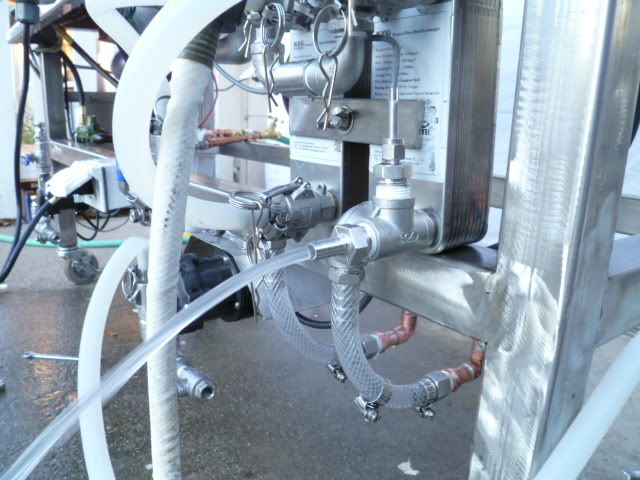bmbigda
Well-Known Member
I have brewed 5 batches now with my plate chiller and although I've learned some things, I don't think I've quite mastered it yet.
Some specifics:
- 40 plate chiller from DudaDiesel
- 10 gallon batches
- March Pump with output ball valve
- Town well water that fluctuates with the seasons, but has been 58 degrees the last few times I brewed.
This is my cooling process as of my last brewday:
- Plate chiller stands up on its side, long way is vertical. Wort-in is on the bottom, Water-in is on the top.
- Start out by recirculating back into the kettle, with a whirlpool. I let it run for a minute or so to sanitize, then turn on cold water. Ball valve is 100% open during recirc. In about 6-7 minutes the wort is down to 120.
- Now I drain into ferment buckets. I would say I need the ball valve about 33% open to get the 68 degrees I'm looking for. This takes another 10-12 minutes to fill 2 buckets, for a total cooling time of 15-20min.
I'm happy with that cooling time for a 10 gallon batch, but I don't have any brewing buddies that use plate chillers, so I wanted to compare notes just in case. The only variable I'm really not sure about is hose water flowrate.
Thanks,
Bryan
Some specifics:
- 40 plate chiller from DudaDiesel
- 10 gallon batches
- March Pump with output ball valve
- Town well water that fluctuates with the seasons, but has been 58 degrees the last few times I brewed.
This is my cooling process as of my last brewday:
- Plate chiller stands up on its side, long way is vertical. Wort-in is on the bottom, Water-in is on the top.
- Start out by recirculating back into the kettle, with a whirlpool. I let it run for a minute or so to sanitize, then turn on cold water. Ball valve is 100% open during recirc. In about 6-7 minutes the wort is down to 120.
- Now I drain into ferment buckets. I would say I need the ball valve about 33% open to get the 68 degrees I'm looking for. This takes another 10-12 minutes to fill 2 buckets, for a total cooling time of 15-20min.
I'm happy with that cooling time for a 10 gallon batch, but I don't have any brewing buddies that use plate chillers, so I wanted to compare notes just in case. The only variable I'm really not sure about is hose water flowrate.
Thanks,
Bryan



